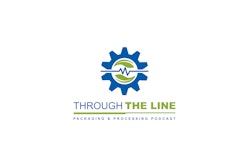Advanced technology will continue to influence the transportation of pharmaceuticals in 2019. One of the best ways to gain insights into this market is to ask an expert.
In this instance, it’s Dominic Hyde, VP of Crēdo™ on Demand, Pelican BioThermal. As a packaging provider for the life sciences industry, the company understands the transport needs of manufacturers of pharmaceuticals, clinical trials, diagnostics, tissues, vaccines and blood supplies. Below, Hyde projects trends he envisions in this marketplace over the new year:
1. Blockchain provides new options for tracking physical movement
Identifying the source of product damage after a shipper has arrived at the end user's facility is a next-to-impossible task. Not only can the source of the damage come from nearly any leg of the journey, but the culprit also isn’t likely to volunteer to pay for the damages to a payload that, in the case of biologics, can be worth well over seven figures. Paper-based manifests, chain of custody and damage records can be fabricated and liability obfuscated.
Blockchain technology; however, can create a permanent and incorruptible record that tracks the physical movement of a shipper and can aid the investigation in determining blame for damages incurred. Through serialization, blockchain can identify when a major 3PL contracts a local, third-party trucking company, for instance, and damage to a carton is incurred. While there are blockchain variations, the Blockchain in Transport Alliance is pushing for a standardized implementation in the logistics industry. At this time, large industry partners such as UPS, FedEx, DHL, and Union Pacific have signed on the BTA, making the future of blockchain in air freight a near certainty.
Within the decade, expect blockchain to expand beyond tracking between the shipper and receiver and encompass the entire pharmaceutical supply chain. Blockchain technology allows for increased data and visibility—from the ingredient suppliers to end-user patient and stages in between—using a permanent, decentralized and public digital record.
2. Artificial intelligence presents new options for factoring package arrival
Artificial intelligence (AI) and predictive software have huge implications for the shipping industry. These algorithms can account for weather forecasts, flight times, gulf streams and even expected wait times and holdovers at customs and border protection facilities, all factors impacting the arrival times for packages.
Datasets from pharmaceutical distribution make the application of AI ideal for the industry. Using this data, AI has the potential to identify new and ongoing issues, empowering positive interventions to preserve shipments. This level of data has the potential to allow third-party logistics (3PL) providers to provide pharmaceutical manufacturers and other stakeholders a new level of customer service; early adoption of AI will be a key differentiator for shippers in the next three to five years.
3. External market factors force consideration of more cost-effective alternatives for less critical return trips. Pilot shortages and an increase in commercial shipping have led to a 6% undersupply in available air freight over the last two years. That creates long lines for a dwindling resource and increased air freight prices to accommodate for supply and demand.
As 3PLs and others providing transport look to rebalance shipping containers in this new climate, it will be essential to seek out cost-effective alternatives to transportation options that focus solely on air cargo. One of those alternatives is sea freight for the return of containers after payloads have reached their destination. Utilizing less expensive options such as sea freight allows passing those savings on to customers. More companies may look to sea freight and other alternative shipping lanes as a way to mitigate increased air freight cost associated with trade tensions and shortages.
While tends like blockchain and AI might not currently appear to be a factor directly impacting the transport of pharmaceuticals, these—along with factors like trade climates, pilot shortages and plane shortages—are trends that are likely to impact air cargo in the coming years. With a large portion of pharmaceuticals shipped via air freight, even the most innocuous trends in air cargo can have a significant impact on the pharmaceutical cold chain. As a result, staying ahead of the latest trends impacting air cargo is a business imperative for those looking to safely and efficiently ship these types of payloads.






















